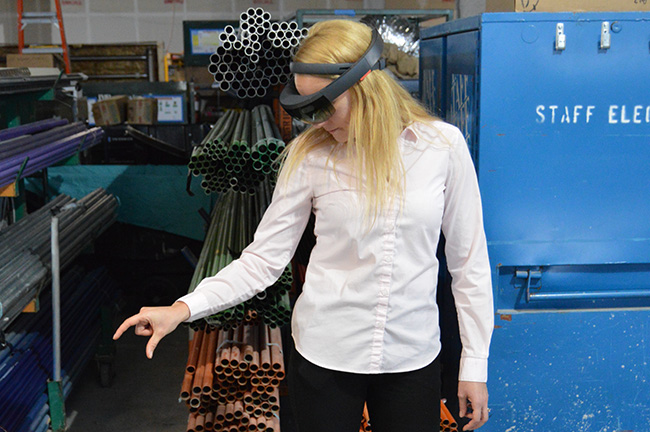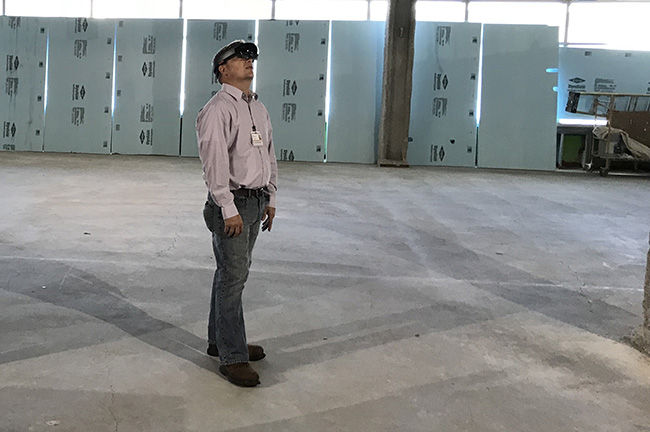
For years, construction and design firms have been using virtual reality (VR) to communicate design and help end users visualize future spaces by fully immersing the user in a computer-simulated environment. Taking this process even further, Mortenson’s project team at Froedtert & the Medical College of Wisconsin Integrated Procedural Platform has recently been using augmented reality (AR) to enhance understanding of the end design.
What’s the difference between augmented reality and virtual reality?
Augmented reality allows the real world to be “augmented” by computer-generated images. This mixed environment combines what the user sees in the physical world with graphics.
Virtual reality immerses the user in a computer-simulated environment without using views of the physical world. Everything the user sees is simulated and does not use visuals from the surrounding environment.
Using the Microsoft HoloLens, 3D models are experienced by walking. Unlike other systems where users navigate and interact with models using hand controllers, this AR model is setup in an open area and usually anchored to the floor (or models can be scaled down and anchored to any surface). The HoloLens’s translucent googles allow the users to see the space they are walking layered with graphics from the model. Being able to walk and move throughout the model helps users understand space implications, workflow, and orientation.
The project team at Froedtert modeled a trauma operating room and invited doctors and nurses to view their future work area using the HoloLens. Experiencing the space ahead of time is especially important for places like trauma operating rooms since efficiency of an OR layout can impact how quickly patients get treated. Walking and interacting with the space gives end users an additional understanding of what the space will look and feel like before it is constructed. This allows users to have more input in the design phase and limit the amount of changes after they occupy the space.

